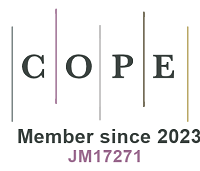REFERENCES
1. Luo J, Jin X, Wang Y, Jin P. Advanced treatment of laundry wastewater by electro-hybrid ozonation-coagulation process: surfactant and microplastic removal and mechanism. Water 2022;14:4138.
2. Pakula C, Stamminger R. Electricity and water consumption for laundry washing by washing machine worldwide. Energy Effic 2010;3:365-82.
3. Kruszelnicka I, Ginter-Kramarczyk D, Wyrwas B, Idkowiak J. Evaluation of surfactant removal efficiency in selected domestic wastewater treatment plants in Poland. J Environ Health Sci Eng 2019;17:1257-64.
4. Santiago DE, Hernández Rodríguez MJ, Pulido-melián E. Laundry wastewater treatment: review and life cycle assessment. J Environ Eng 2021;147:03121001.
5. Oktiawan W, Samadikun BP, Junaidi, et al. Effect of electrode configuration and voltage variations on electrocoagulation process in surfactant removal from laundry wastewater. IOP Conf Ser Earth Environ Sci 2021;896:012049.
6. Badmus SO, Amusa HK, Oyehan TA, Saleh TA. Environmental risks and toxicity of surfactants: overview of analysis, assessment, and remediation techniques. Environ Sci Pollut Res Int 2021;28:62085-104.
7. Kaleta J, Elektorowicz M. The removal of anionic surfactants from water in coagulation process. Environ Technol 2013;34:999-1005.
8. Belzagui F, Crespi M, Álvarez A, Gutiérrez-Bouzán C, Vilaseca M. Microplastics’ emissions: microfibers’ detachment from textile garments. Environ Pollut 2019;248:1028-35.
9. De Falco F, Gullo MP, Gentile G, et al. Evaluation of microplastic release caused by textile washing processes of synthetic fabrics. Environ Pollut 2018;236:916-25.
10. De Falco F, Di Pace E, Cocca M, Avella M. The contribution of washing processes of synthetic clothes to microplastic pollution. Sci Rep 2019;9:6633.
11. Galvão A, Aleixo M, De Pablo H, Lopes C, Raimundo J. Microplastics in wastewater: microfiber emissions from common household laundry. Environ Sci Pollut Res Int 2020;27:26643-9.
12. Xu R, Yang Z, Niu Y, et al. Removal of microplastics and attached heavy metals from secondary effluent of wastewater treatment plant using interpenetrating bipolar plate electrocoagulation. Sep Purif Technol 2022;290:120905.
13. Elizalde-Velázquez GA, Gómez-Oliván LM. Microplastics in aquatic environments: a review on occurrence, distribution, toxic effects, and implications for human health. Sci Total Environ 2021;780:146551.
14. Tripathi SK, Tyagi R, Nandi BK. Removal of residual surfactants from laundry wastewater: a review. J Dispers Sci Technol 2013;34:1526-34.
15. Yaranal NA, Subbiah S, Mohanty K. Microplastics in the environment: sources, pathways, and abundance. IGI Global; 2022, p. 49-70. Available from: https://www.igi-global.com/chapter/microplastics-in-the-environment/305542. [Last accessed on 26 Oct 2023].
16. Li J, Dagnew M, Ray MB. Effect of coagulation on microfibers in laundry wastewater. Environ Res 2022;212:113401.
17. Patil VV, Gogate PR, Bhat AP, Ghosh PK. Treatment of laundry wastewater containing residual surfactants using combined approaches based on ozone, catalyst and cavitation. Sep Purif Technol 2020;239:116594.
18. Ramcharan T, Bissessur A. Treatment of laundry wastewater by biological and electrocoagulation methods. Water Sci Technol 2017;75:84-93.
19. Šostar-turk S, Petrinić I, Simonič M. Laundry wastewater treatment using coagulation and membrane filtration. Resour Conserv Recycl 2005;44:185-96.
20. Akarsu C, Kumbur H, Kideys AE. Removal of microplastics from wastewater through electrocoagulation-electroflotation and membrane filtration processes. Water Sci Technol 2021;84:1648-62.
21. Elkhatib D, Oyanedel-craver V, Carissimi E. Electrocoagulation applied for the removal of microplastics from wastewater treatment facilities. Sep Purif Technol 2021;276:118877.
22. Shen M, Zhang Y, Almatrafi E, et al. Efficient removal of microplastics from wastewater by an electrocoagulation process. Chem Eng J 2022;428:131161.
23. Das PP, Anweshan, Mondal P, et al. Integrated ozonation assisted electrocoagulation process for the removal of cyanide from steel industry wastewater. Chemosphere 2021;263:128370.
24. Deepti, Bora U, Purkait MK. Promising integrated technique for the treatment of highly saline nanofiltration rejected stream of steel industry. J Environ Manage 2021;300:113781.
25. Jiang Y, Yin X, Xi X, Guan D, Sun H, Wang N. Effect of surfactants on the transport of polyethylene and polypropylene microplastics in porous media. Water Res 2021;196:117016.
26. Dimoglo A, Sevim-Elibol P, Dinç Ö, Gökmen K, Erdoğan H. Electrocoagulation/electroflotation as a combined process for the laundry wastewater purification and reuse. J Water Process Eng 2019;31:100877.
27. Priya M, Jeyanthi J. Removal of COD, oil and grease from automobile wash water effluent using electrocoagulation technique. Microchem J 2019;150:104070.
28. Perren W, Wojtasik A, Cai Q. Removal of microbeads from wastewater using electrocoagulation. ACS Omega 2018;3:3357-64.
29. Yaranal NA, Subbiah S, Mohanty K. Distribution and characterization of microplastics in beach sediments from Karnataka (India) coastal environments. Mar Pollut Bull 2021;169:112550.
30. Yaranal NA, Subbiah S, Mohanty K. Identification, extraction of microplastics from edible salts and its removal from contaminated seawater. Environ Technol Innov 2021;21:101253.
31. Das PP, Mondal P, Anweshan, et al. Treatment of steel plant generated biological oxidation treated (BOT) wastewater by hybrid process. Sep Purif Technol 2021;258:118013.
32. Barz G, Gordalla B, Vega I, Lewis J. Water quality - Determination of surfactants - Part 1: Determination of anionic surfactants by measurement of the methylene blue index (MBAS). 1996. Available from: https://cdn.standards.iteh.ai/samples/24784/e633ec389b134ad1a402a1dc8a976bfd/ISO-7875-1-1996.pdf. [Last accessed on 26 Oct 2023].
33. Jurado E, Fernández-Serrano M, Núñez-Olea J, Luzón G, Lechuga M. Simplified spectrophotometric method using methylene blue for determining anionic surfactants: applications to the study of primary biodegradation in aerobic screening tests. Chemosphere 2006;65:278-85.
34. Jang YC, Lee J, Hong S, Lee JS, Shim WJ, Song YK. Sources of plastic marine debris on beaches of Korea: more from the ocean than the land. Ocean Sci J 2014;49:151-62.
35. Bayramoglu M, Kobya M, Can OT, Sozbir M. Operating cost analysis of electrocoagulation of textile dye wastewater. Sep Purif Technol 2004;37:117-25.
36. Wang CT, Chou WL, Kuo YM. Removal of COD from laundry wastewater by electrocoagulation/electroflotation. J Hazard Mater 2009;164:81-6.
37. Shen M, Song B, Zeng G, Zhang Y, Teng F, Zhou C. Surfactant changes lead adsorption behaviors and mechanisms on microplastics. Chem Eng J 2021;405:126989.
38. Xia Y, Xiang XM, Dong KY, Gong YY, Li ZJ. Surfactant stealth effect of microplastics in traditional coagulation process observed via 3-D fluorescence imaging. Sci Total Environ 2020;729:138783.
39. Shim HY, Lee KS, Lee DS, et al. Application of electrocoagulation and electrolysis on the precipitation of heavy metals and particulate solids in washwater from the soil washing. J Agric Chem Environ 2014;3:130.
40. Le LT, Nguyen KQN, Nguyen PT, et al. Microfibers in laundry wastewater: problem and solution. Sci Total Environ 2022;852:158412.







